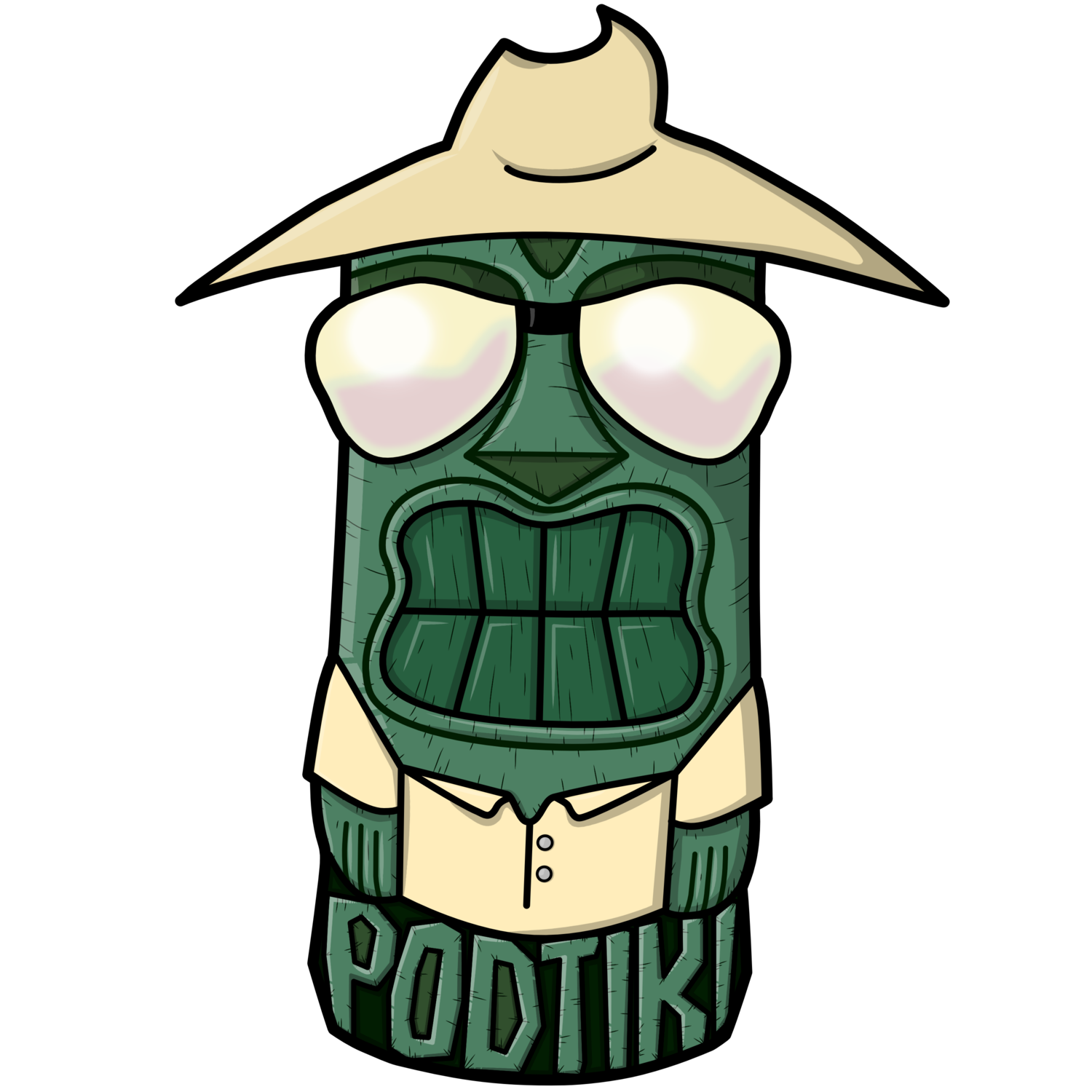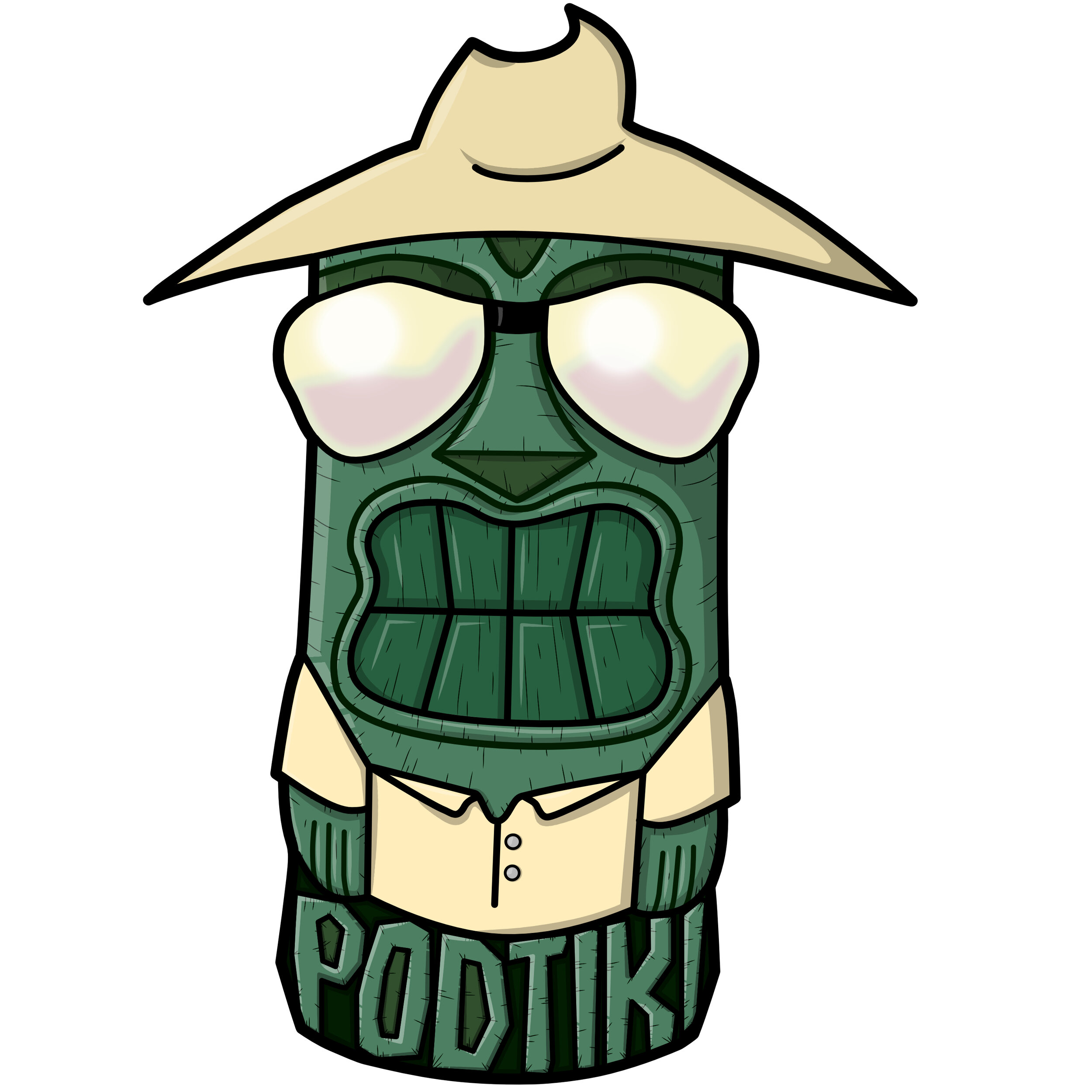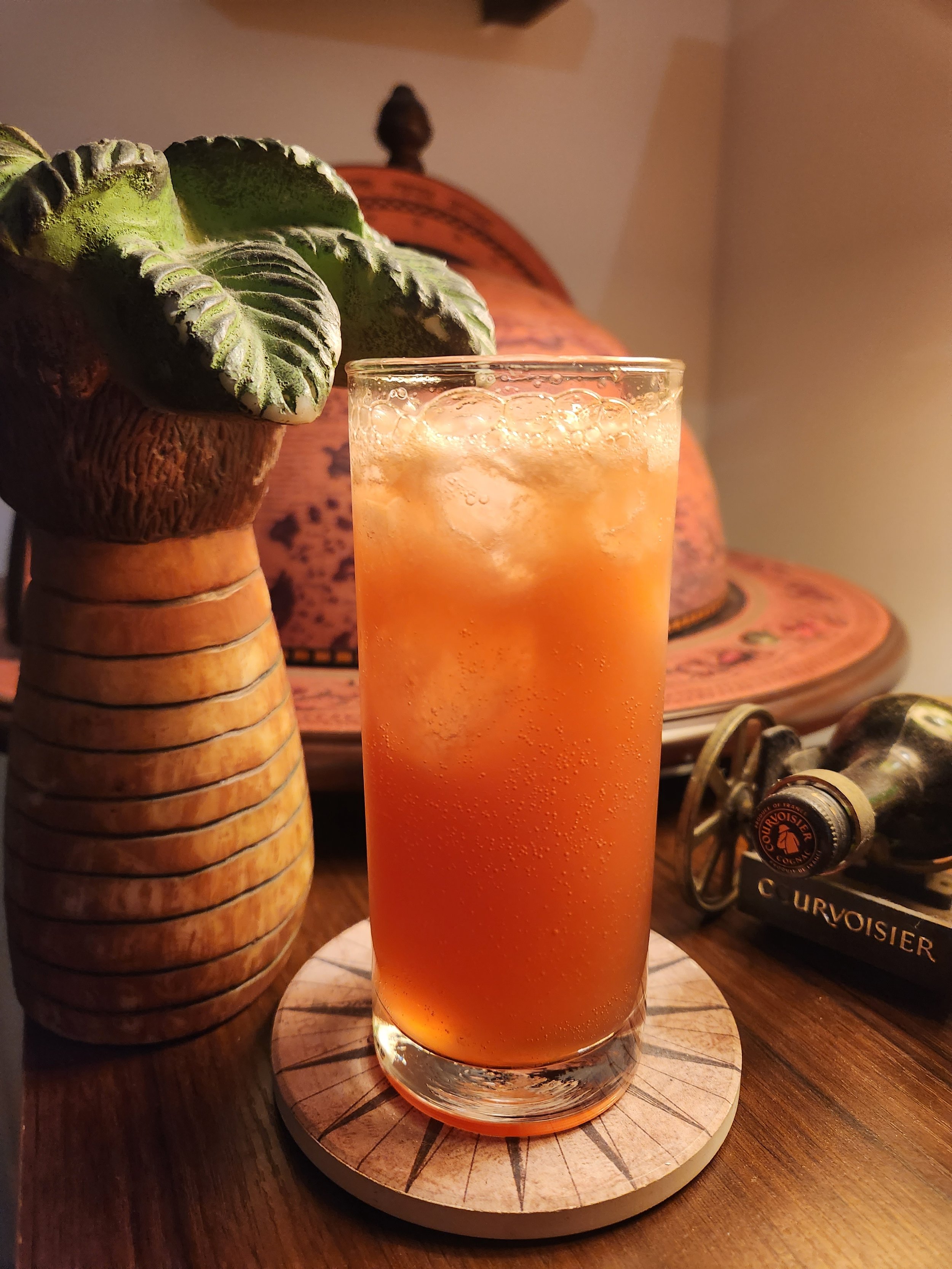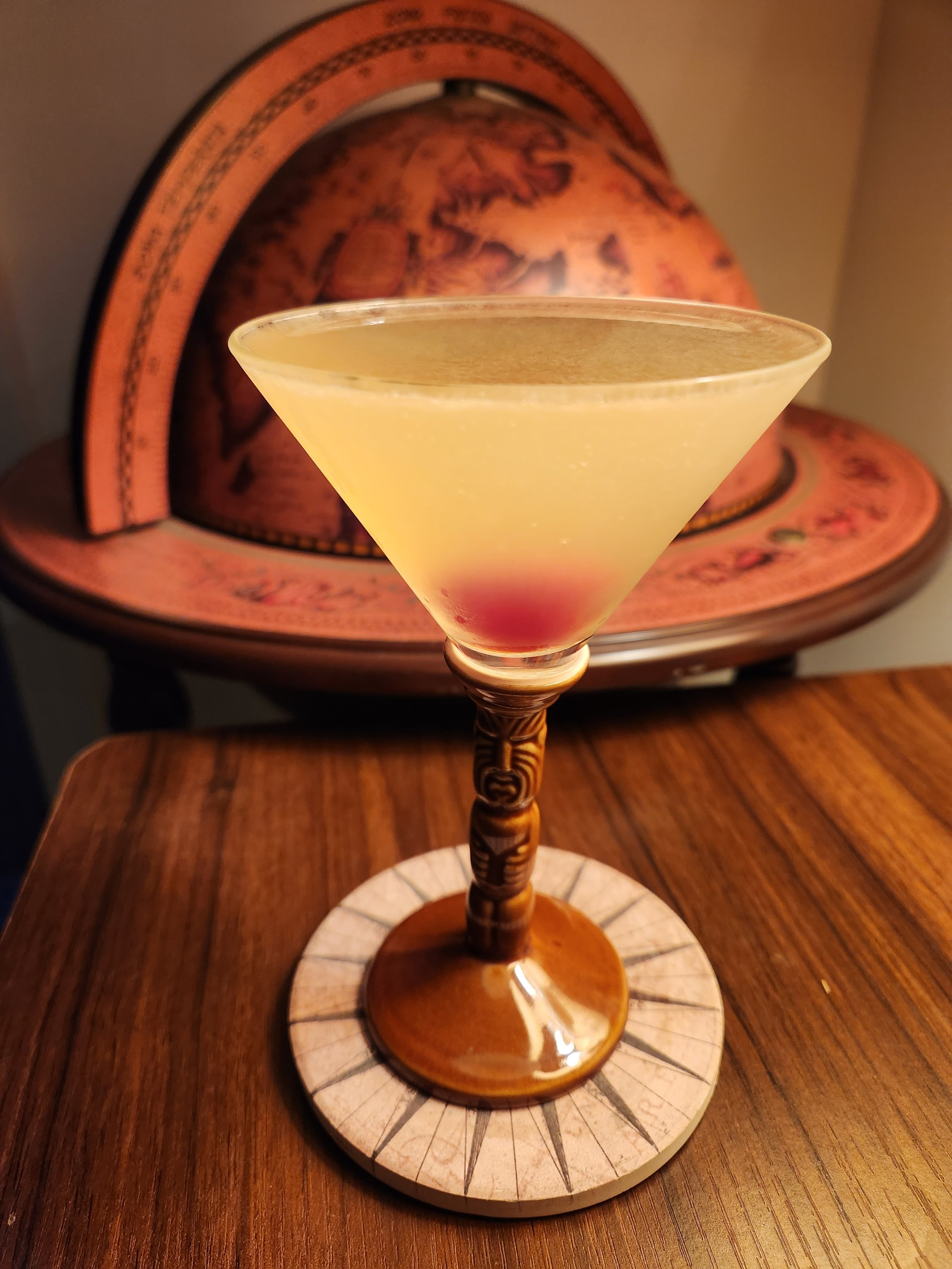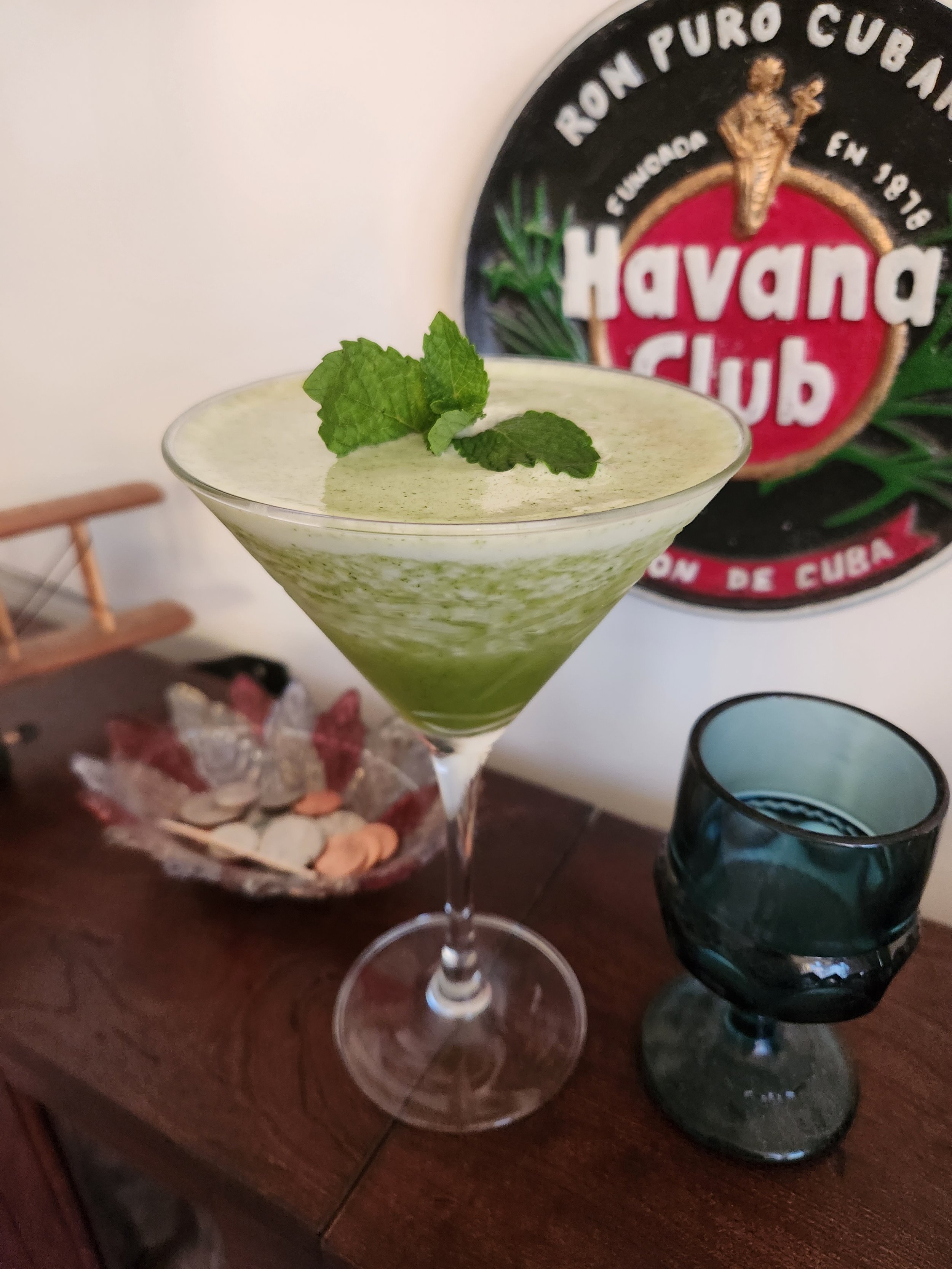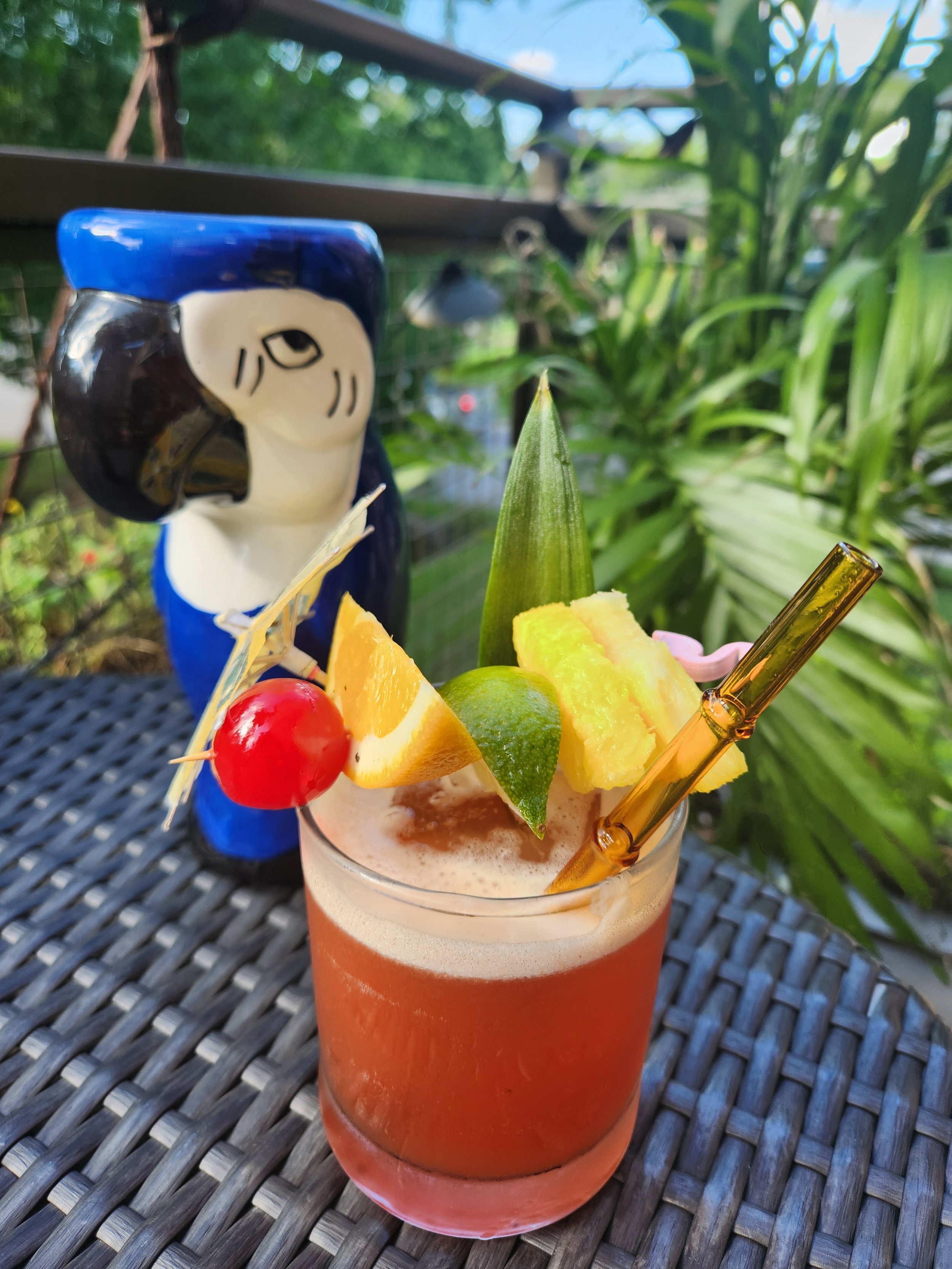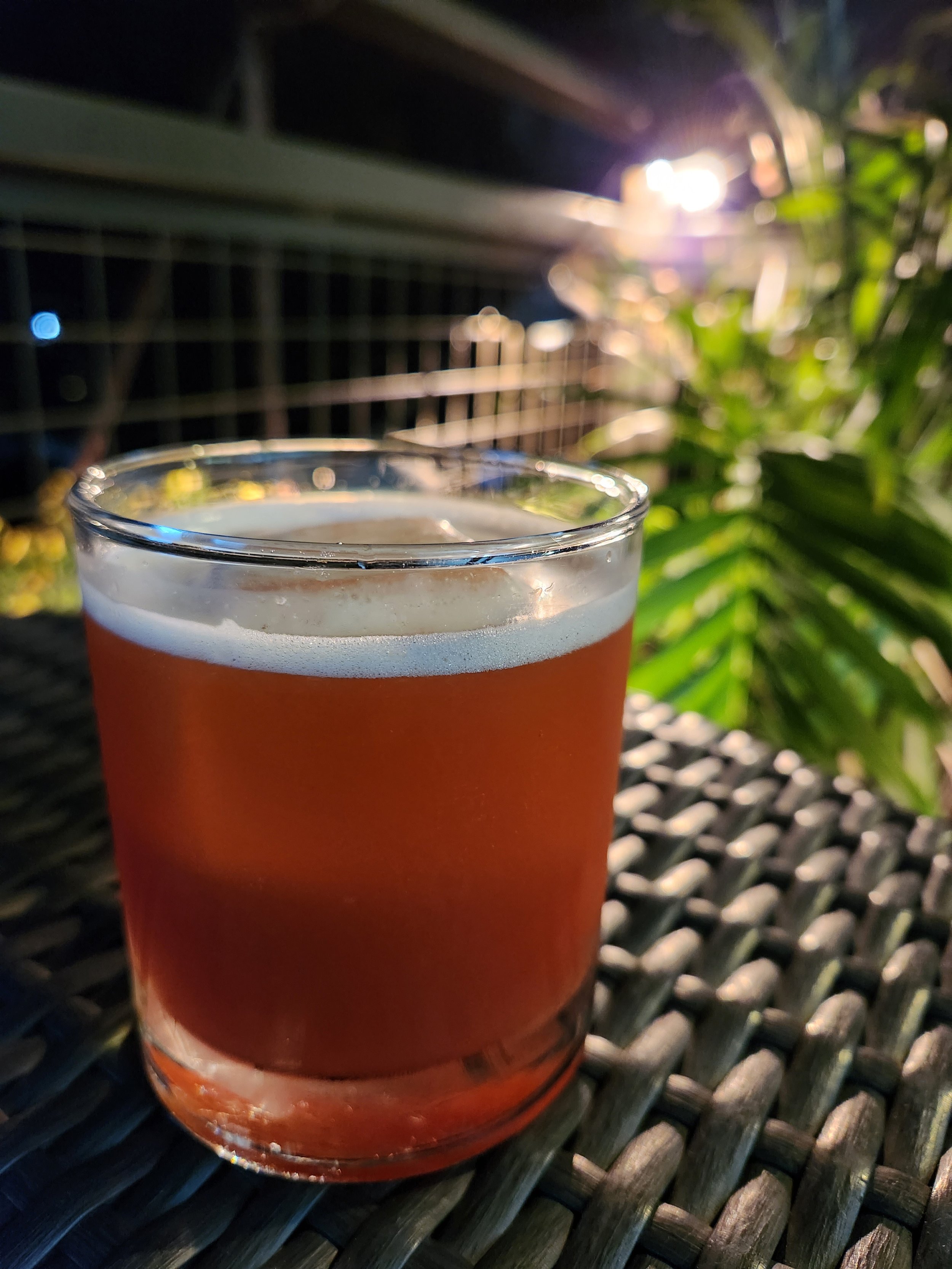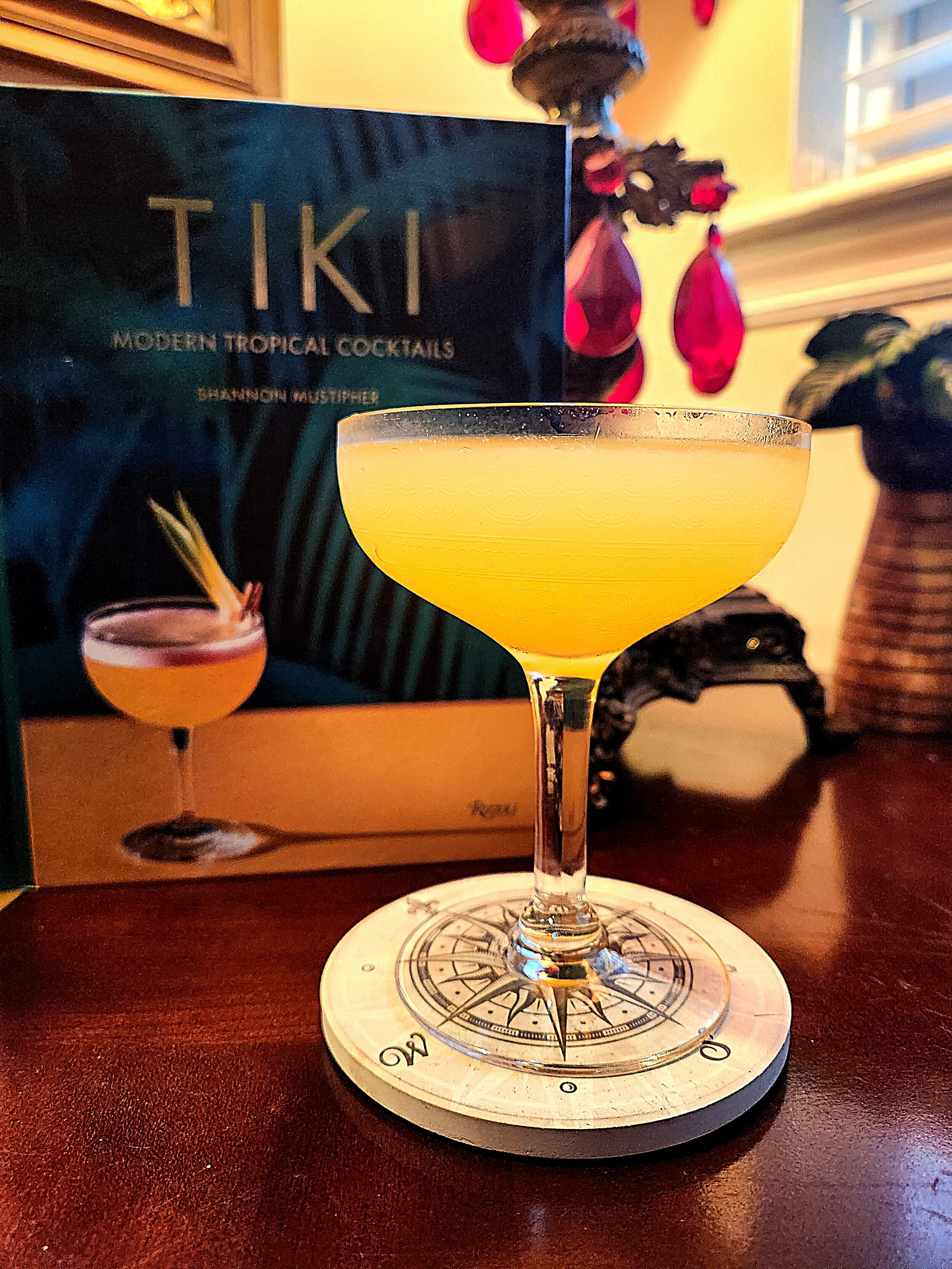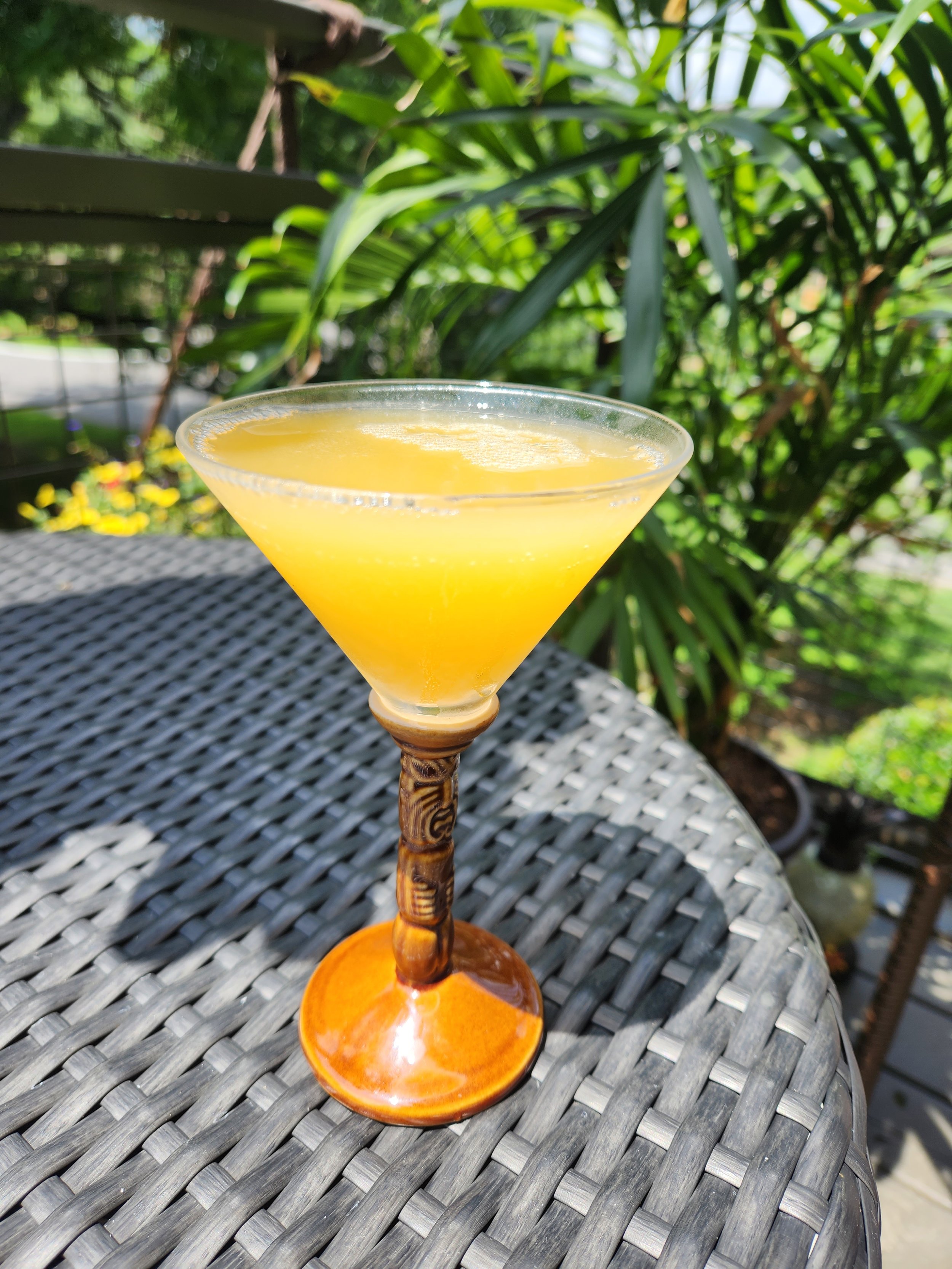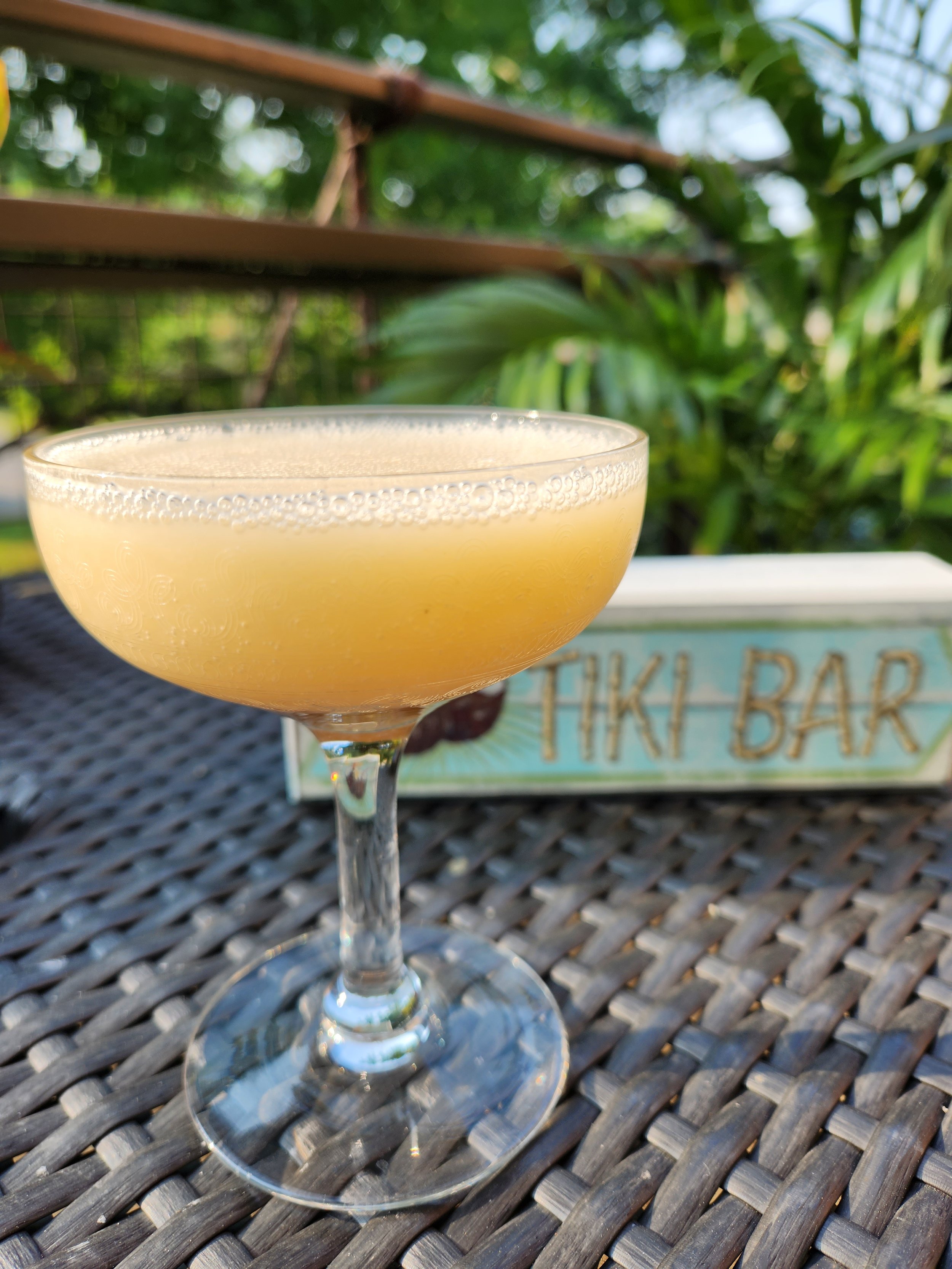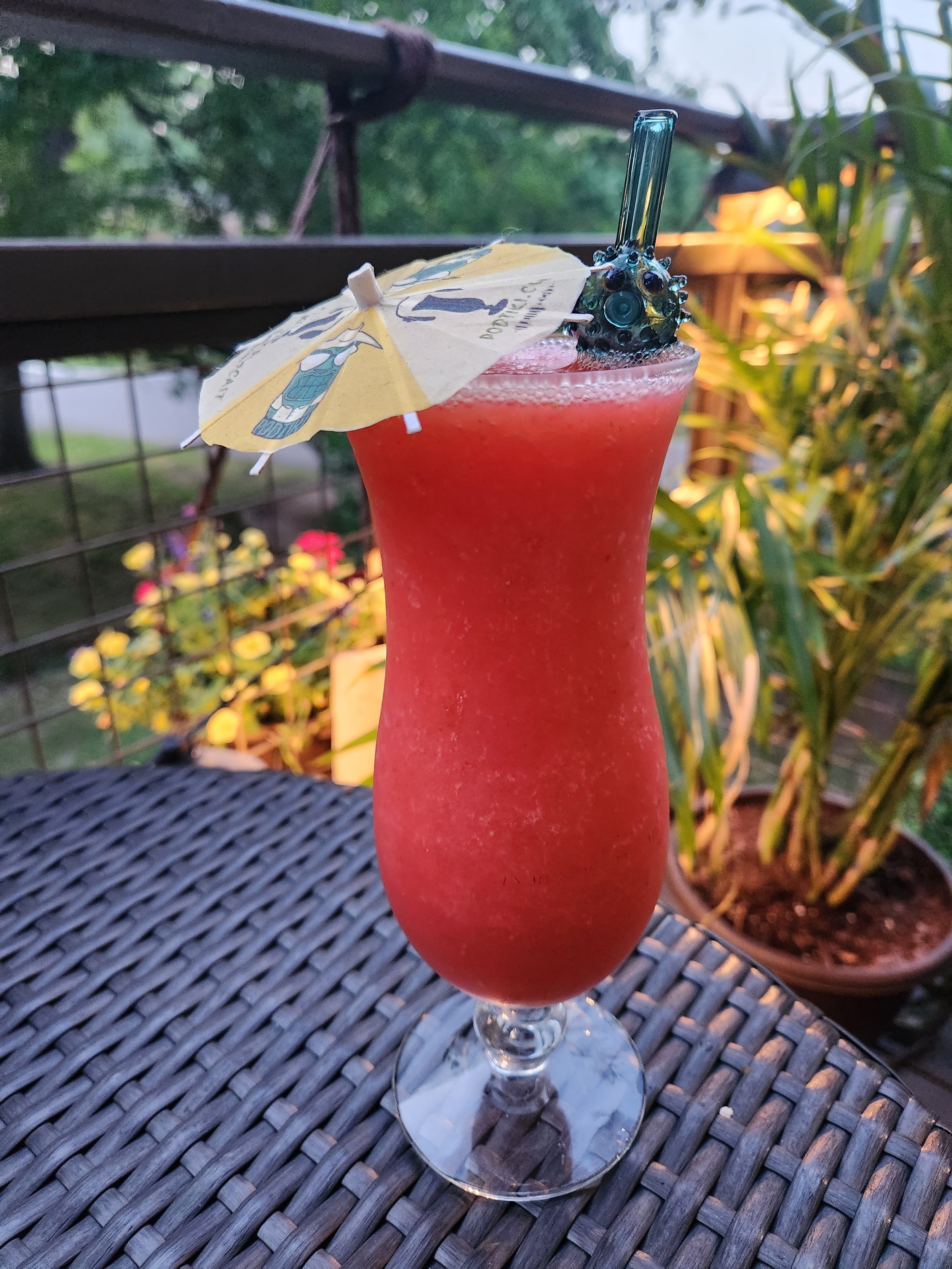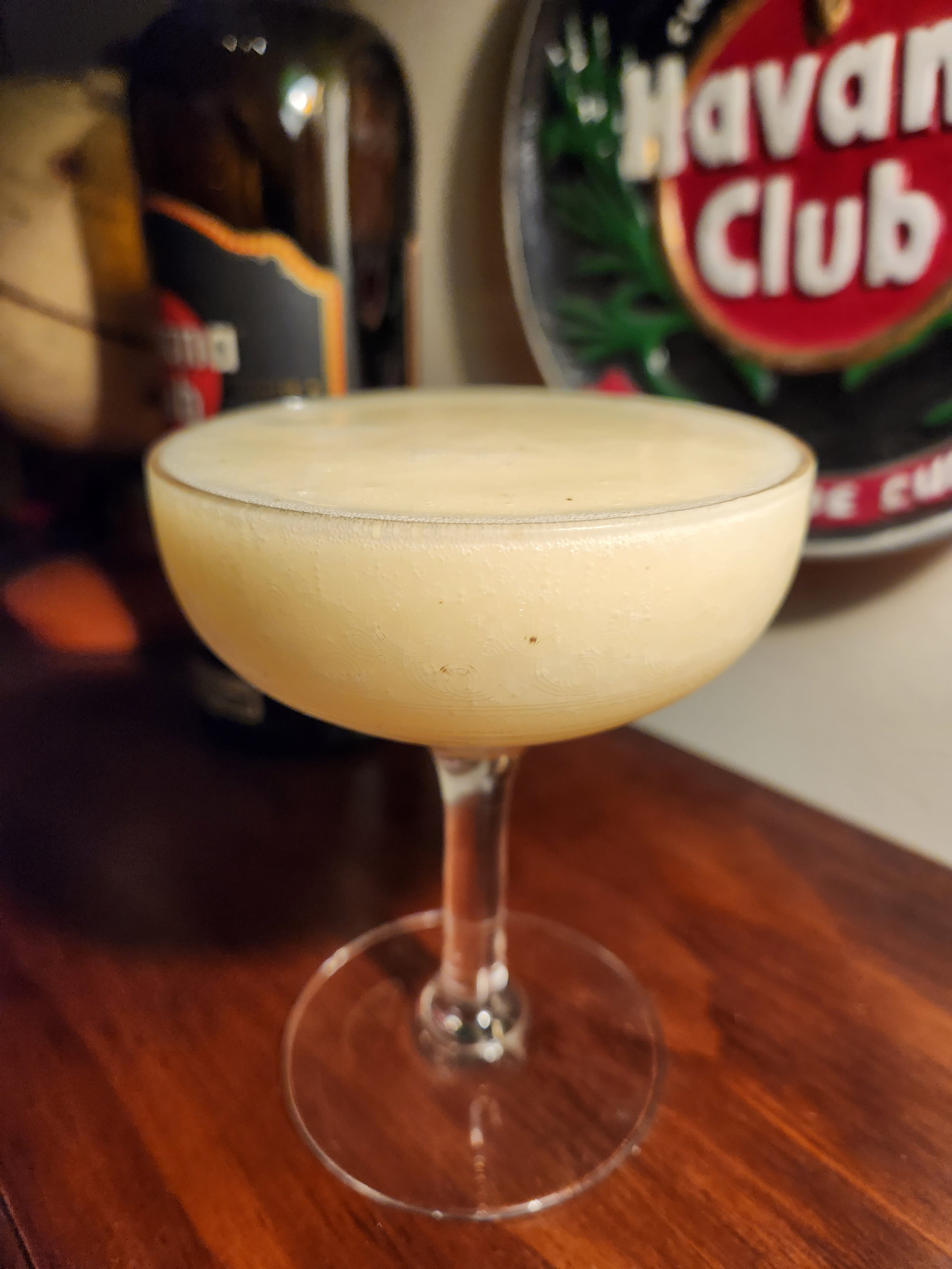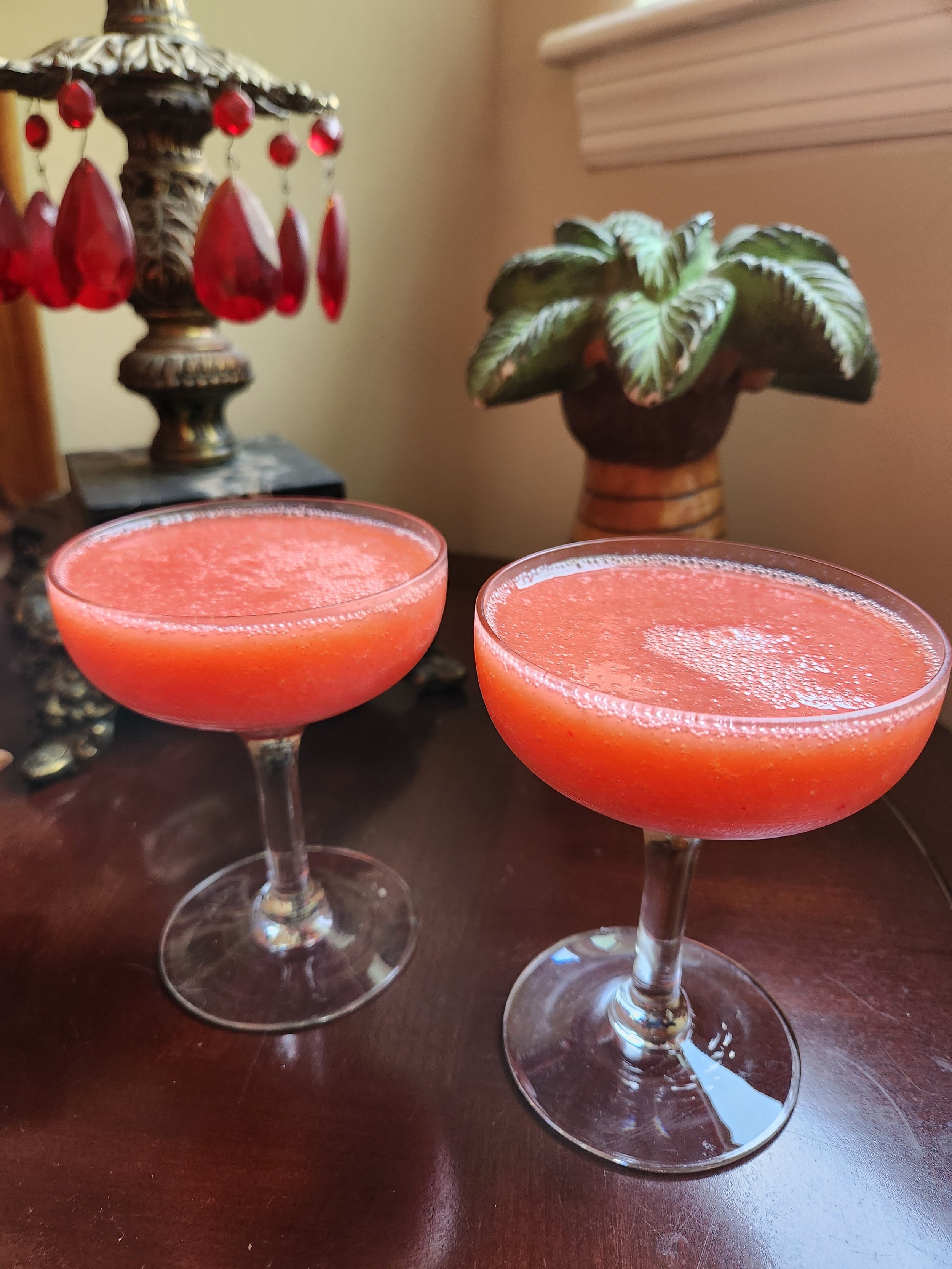Tropical drinks are not exclusively for beaches and escapism. Under the right circumstances, in the perfect atmosphere, a tropical drink can be elegant; even luxurious? Thus, in some cases there’s no need for escapism because where you are is exactly where you want to be.
The door man plied his craft as we stepped from an urban sidewalk into the Beaux-Arts designed historic Hermitage Hotel. An ascending staircase carpeted in intricate patterns carried guests to the storied opulence of this early 20th century ode to fiscal obesity. White marble columns stood as sentinels encircling the lobby, they sprouted up the walls and across the high ceiling large arching plumes of baroque trimmed woodwork featuring ornate painted reliefs which seemed to visually sink into pallid gold walls. A fireplace crackled behind a set of tall wing-back chairs. Tufted, pleated, buttoned, and plushed; the furniture offered an air of refined comfort. Such is the Petri plate for that unique brand of imposed indifference suffered by the rich. Palm fronds bent blithely throughout, in that listless way they do, don’t they? As did long heavy embroidered curtains parted such as young girls might hang pigtails around their faces.
Any more detail on the subject would be what Hemingway called ‘erectile writing’. So, I’ll move now, as we did in this story, passed the lobby. Rather than climb the wide staircase before us we opted just to the right where an opposing staircase descended vaguely. With a wide mouth narrowing to a slight curve at the bottom this staircase bade the user to trod slowly upon its clever steps. I ran my opened palm along the smooth patinated striations of an oversized wooden handrail till my wife and I entered the Oak Bar.
A recherche little place disguised under simple refinement. Elegance without pretense. A place where distinguished gentlemen may retire in the evening. The room was cozy, but private. Glowing sconces hung on dark wood paneled walls, a short row of leather cushioned booths lined a wall, and sets of tables and chairs for two in the center were made of heavy oak, aged but not old. The bar was heavy with brass, leather, and deep earthy brown oak. To one side of the room you’ll find a small nook in the wall wherein two seats and a cocktail table are placed. At those seats you’ll find my wife and I. She takes a beautiful sip of bourbon as the large ice cube, which has begun to round at its corners, shimmers in the glass. I, on the other hand, have been beguiled by the siren song of the tropics. The tall slender Collins glass before me holds a pale red concoction that has rendered me many nights of ponderous thought over the flavors, ingredients, and history of this libation. And, often rendered me incapable of such thought. The Singapore Sling.
The Hermitage Hotel is in Nashville, TN. Quite far from Singapore. But the aesthetic framework is very similar. For, the tiny island nation of Singapore is home to one of the most opulent hotels in the region. Which is home to one of the most famous bars. Which is home of one of the most infamous cocktails.
Ladies and Gentlemen, my name is Tony and this is Pod Tiki.
Tropulance. The idea of opulence in the tropics. One of the best examples of this is the Raffles Hotel. Though I’ve never been, I've always been intrigued by this part of the world. Singapore being tied to Britain makes it tangentially tied to America, as witnessed by its many appearances in literature and film. It was one of those revelation moments when during this research I learned that Singapore didn’t gain independence from Britain till 1963. Singapore began as a city, now it’s a City Nation under the auspices of greater Malasia.
What we call Singapore today was founded by Sir Thomas Stamford Raffles, guv’nah of the Dutch East Indies circa 1820’s. It’s for him the Raffles Hotel was named when it opened in 1887. What began as a private beach house opened as a hotel with 10 rooms and quickly became a favorite vacation spot for the wealthy. Not only was it right on the beach, but from day one Raffles was known for its high standards of quality. It was, after all, the first hotel in the entire region to have those new fangled electric lights! Additional buildings became separate wings, became courtyards, verandas, ballrooms and, of course, a bar.
Every story needs a good second act conflict, though. For the Raffles Hotel that came by way of Japanese occupation during WW2. During which they renamed the hotel Syonan Ryokan (昭南旅館, shōnan ryokan). Syonan being the name Japan changed Singapore to when they usurped. Imagine barging into someone’s home saying, “this is my family now. And by the way, Steve, your name is Daichi now.” The hotel was reclaimed by the British in 1945 during Operation Tiderace. That sounds like a British operation, right? Commence Tiderace! Actually, it sounds like you’re asking her where to finish, but that joke’s a little too dirty for this podcast.
In 1987 Raffles was designated a national monument and in 1989 it actually closed for two years to undergo a complete renovation designed to bring the hotel back to the grandeur of its heyday. From 2017 to 2019 Raffles closed again to further upgrade the property with new technology and increase the number of rooms to its current 115. Part of those original renovations was to relocate the Long Bar from the lobby to an adjoining arcade. Arcade here being the British term for an outdoor shopping district. (Anyone listening in England, you can tell me if I’m right about that.) The Long Bar is the next click for focusing in on our subject.
The Long Bar first resided in Cad’s Alley. Essentially the entrance to the main lobby of the Raffles Hotel. Less of a fixed bar and more a row of several tables pushed together to face the road where gentlemen could tipple while watching the lovely ladies stroll into the hotel. This was mentioned several times in my research. Not sure why so many ladies were parading around the hotel entrance all dolled up so, but apparently this was the equivalent of 1920’s tinder.
After moving to the attached arcade plaza the Long Bar became a proper lounge with a very long bar in keeping with tradition. No word on whether or not a panoply of sexy ladies still wander about outside. Remember, not all who wander are lost. Some are just drunk.
Now, this is a different Long Bar than the one Joe Scialom served at in the shepard’s hotel in Cairo. Apparently, there were a lot of Long Bars back then. It seems our mixological progenitors put a lot of time into making great drinks, not so much into naming concepts. I kinda wish some modern bars would return to that notion.
It’s here in 1915 the Singapore Sling is purported to be invented by bartender Ngiam Tong Boon. Sorry for my pronunciation. I’ve been known to cause a malay in my day, but I don’t speak it. Those days were Raffles’ gilded era, and the Long Bar was the rendezvous spot for not only the upper crust, but the entire community. One of the origin stories of the Singapore Sling claims that it was created specifically to look like fruit juice in the glass. This due to the fact that social etiquette at the time discouraged women from drinking alcohol in public. Thus, Boon created a drink those heathen jezebels could order without being judged. Presumably, by other patrons, themselves rapidly devolving into inebriance. How dare they enjoy the same vices as a man. And in public!
There’s no doubt that Mr. Boon created this drink. Slings had been a style of drink for decades, and there are records of English bartenders adding fruit juices and liqueurs to traditional gin slings as far back as 1862 in a book by Queen Victoria’s chef titled Cook’s Guide, and Housekeepers and Butler’s Assistant. David Wondrich and Ted Haigh, two of the most distinguished cocktail historians, agree these were less slings, and more gin punches.
You guys know when it comes to cocktail history I take an Occam's Razor approach. That stating that the easiest explanation is probably the correct one. During this era of cocktail proliferation it was quite common for everyone to riff on everything. It stands to reason that mixing juice and liqueurs into a sling was already accepted practice and Ngiam Tong Boon simply fashioned one to his needs and specifications. In any case, the Long Bar at Raffles is noted as the birthplace of what we call the Singapore Sling, and still serves up to 1200 per day! Probably even to women!
To understand the evolution of the Singapore Sling we need to go back to the original Gin Sling cocktail. This takes us back to the age of Jerry Thomas and pre-prohibition American drinking. Initially, a sling, thus named for how easy folks were “slinging them back”, was simply a toddy with extra alcohol and some nutmeg. That is equal parts spirits and water with some added sugar. Over time gin became the prominent spirit used and imbibers preferred it cooled with water or ice. So was the Gin Sling born and popularized throughout America. Part of its rapid dissemination was due to the fact that, much like ti’ punch in Martinique, the Gin Sling was regarded as a quick drink that could be enjoyed, or over enjoyed, anytime of day. Morning, noon, or well into the night. I’m not joking. Morning libations, colloquially known as “taking one’s bitters”, was a common, if not unfortunate, practice in early American drinking. We were like frat boys who grew up in a puritan household and got their first taste of debauchery. The sling eventually evolved into the cocktail, but some of the more punchy versions lived on.
The Straits Sling is one of these. A precursor to the SIngapore Sling, the Straits Sling - a mixture of gin, Benedictine, lemon, bitters, soda water, and a clear cherry liqueur called Kirschwasser, is at its core a Singapore Sling with clear cherry liqueur instead of the dark syrupy Cherry Heering commonly used now. In fact, Ted Haigh postulates that the SIngapore Sling could have come into existence by the misreading of that ingredient. We know that in 1915, when the Singapore was created, dark cherry liqueurs were more prominent. Furthermore, the Straits is still what locals call Singapore, as the island is separated from mainland Malaysia by the Straits of Johor. So, perhaps the Singapore Sling is just a Straits Sling with dark liqueur and pineapple juice. This would make sense to give it that pinkish hue meant to ingratiate it to those drunken jezebels.
I didn’t have any Kerschwasser on hand, but I did have Luxardo, also a clear cherry liqueur. I thought this was way lighter and in some cases a better cocktail than its Singapore Sling cousin in the traditional sense of the word. You can taste alcohol for one. Slight carbonation is quite nice. Bitters and even the botanical Benedictine are present without being prominent. With a bend towards refined and regal, pale in color but not in flavor, the Straits Sling is a lovely cocktail. But, it’s not a Singapore Sling. It is nice enough, though, that it deserves a place within this episode. So, here’s the recipe:
2 oz Gin
½ oz Kirschwasser (or clear cherry liqueur)
½ oz Benedictine
½ oz Lemon Juice
2 dashes Angostura Bitters
2 dashes Orange Bitters
1 oz Soda Water
Shake everything except soda with ice and strain into a champagne flute. Top with the soda water.
Returning to the SIngapore Sling, early publications, as well as modern ones, all differ in ingredients and measurements. Nowadays, even Raffles admits they don’t know the real original recipe. But, wherever the truth lay, the Singapore Sling is a delicious drink that when made properly is an excellent example of consummate mixology. So, what is the proper way to make it? It just so happens I’ve done extensive research on the subject. Meaning, of course, that I drank a lot of Singapore Slings. Let’s make a drink!
First to do is go over these ingredients, because there’s a few things we haven’t used on the show before and a few things that differ depending on the source.
Let’s tackle the constants. Across the board everyone seems to agree that the main spirit is London Dry Gin. I used Beefeater. A true old fashioned gin sling would’ve been made with Holland, a type of gin with more body and less juniper. There’s a distillery here in Nashville called Corsair that makes a good smokey version of this, or Plymouth gin if you’re shopping the big stores. But, that’s neither here nor there (where is it, then?), because we’re using London Dry here.
Another ingredient that always makes an appearance is Benedictine. Here we need to take a brief aside to explore this fascinating elixir. Benedictine is an herbal liqueur and was indeed first mixed up in 1510 by a Benedictine monk named Dom Bernardo Vincelli at the Abbey of Fécamp in Normandy, France. Like a lot of early spirits it was created as a health tonic. This notion seems silly and a bit snake oily, but without pretense it makes sense. Natural herbs and botanicals are known to have healing effects, especially if you don’t have penicillin or know about germs yet. And the distillation process does offer the angels their share as sure as also ameliorating one’s malaise, if not but temporarily. Besides, the Benedictine monks were regarded as a “contemplative monastic order”. I don’t know about you, but I become quite contemplative with a little buzz. And, as a Catholic, I can attest that Jesus gets a pretty good buzz.
The recipe was said to have been lost during the French revolution, but discovered again in 1863 by wine trader Alexandre Le Grand. By 1888 Benedictine was being exported to the U.S., and as we all know when you introduce a new booze to capitalism it’s gangbusters whether it’s good or not. Just ask Fireball. Luckily for Benedictine it was and is in fact very good and has become a staple in some very famous cocktails.
In 1905 Le Grand built Le Palais Bénédictine in Fécamp, France where the spirit is still made today. Benedictine is currently owned by Bacardi Limited though the Le Grand family still holds only one of three remaining written recipes. Of the 27 ingredients the Le Grands have relinquished saffron and angelica. The remaining 25 are a closely guarded secret.
The last cool Benedictine fact I have is if you read the label on the bottle the product’s full name is Benedictine D.O.M. This stands for Deo Optimo Maximo - GOD infinitely good, infinitely great. Dominus was also a title given to Benedictine abbots. Shortened to Dom, as is Dom Bernardo, it’s ostensibly where we get the Don title in Spanish and Italian cultures.
Okay, digression over. Back to the SIngapore Sling ingredients. For the juices we’ll need pineapple juice and fresh lime juice. Also, Angostura bitters and some grenadine. I make my grenadine at home by boiling equal parts POM juice and raw cane sugar. Lastly, some soda water.
The Singapore Sling is made so many different ways with so many different specs that it’s borderline a style of drink rather than something specific. But, I don’t believe that. I think the Singapore Sling is its own thing with its own distinct profile. How we get there is the point of contention. Which brings us to orange liqueur. I’ve seen Grand Marnier, which is backed up by some early recipes calling for brandy and orange bitters. I’ve also seen curacao. But, the most prevalent orange liqueur throughout all the recipes is Triple Sec. B-T-dubs, if you’re seeing Cointreau, that is actually just a brand name of high-end Triple Sec. I used DeKuyper. I think it’s the best of the easy to find Triple Secs. Plus, I already had some on hand left over from Cinco de Mayo. In some cases this liqueur is omitted completely.
Finally, we need to talk about cherry liqueur. As we already discussed, the use of Cherry Heering is what separates the Singapore from other sling drinks, giving it its own character. Cherry Heering really tastes just like the sugary syrup inside those chocolate covered cherries you get at Christmastime or Valentine’s Day. This unique Scandinavian cordial claims to be the first cherry liqueur, debuting in 1818, and uses real cherries and botanicals to achieve that flavor that is smokey and rich and could be overpowering in a cocktail if not tempered. In fact, in my first few versions of the Singapore Sling I thought the recipe was wrong till I realized that the distinct flavor of burnt cherry is not only intended, but necessary. With the myriad variations in recipes the Cherry Heering flavor may be the defining note that makes a Singapore Sling.
I have been borderline obsessed with this spirited beverage since I tasted my first one in the salubrious underground confines of the dimly lit Oak Bar. Perhaps, even before that. In Jimmy Buffett’s song Altered Boy, while on a visit to the Tonga Room, he beckons the waiter for another one of those Singapore Sliiiiiiiings… (“San Francisco, the gateway to the Pacific. For the geographically impaired, San Francisco is in California.”) It’s because I’m so intrigued by finding the perfect version of this drink that I believe I’ve tried more recipes for this episode than any in Pod Tiki history. The current Raffles recipe. That recipe, improved by Ted Haigh. One from liquor.com. Two from Beachbum Berry, one from Martin Cate, and a few more I’ll get to later.
Through the flames and out the other side of my tireless efforts I have indeed come to what I think is the best Singapore Sling recipe. It amalgamates all the flavors in a way that is not so balanced such to lose that which makes it a unique cocktail. This recipe is from Difford’s Guide and is credited to Dale DeGroff. It is as follows:
1 ½ oz London Dry Gin
½ oz Cherry Heering
¼ oz Benedictine
¼ oz Triple Sec
1 ½ oz Pineapple Juice
½ oz Lime Juice
1 bar-spoon Grenadine
2 dashes Angostura Bitters
Shake everything with ice and strain into a tall Collins glass or footed Pilsner over cubed ice. I specify cubed because there’s a tendency in our genre of Tiki to use crushed ice for everything. Personally, I feel like it dilutes the drink too quickly. Garnish here could be an orange wheel or pineapple wedge, maybe a cherry. Your standard tropical fruit on a toothpick. Why not stick an umbrella in there, as well? That’s all lovely for instagram, but remember this is a drink that is meant to be ‘slung back’. Usually, that fruit is but a napkin feast for tropical flies.
Upon first sip I get smooth pineapple followed by sweet smokey cherry. Once that subsides the floral notes of gin and Benedictine shine through. The color is pale pink, slightly amber. No one flavor is protruding rudely. Everything is harmonious. Its fruity components are simultaneously dark and rich while also at times bright and tropical. And of course, the Cherry Heering is always present reminding you you’re drinking a Singapore Sling.
Now, this is, in my humble opinion, the best representation of the Raffles Singapore Sling. This is what it’s supposed to taste like. It’s what you should get if you order one at a good bar. But, there’s a caveat. We’ve run across viable riffs on drinks that either add or omit ingredients and mess with levels, but I can’t remember one that takes it to this level and technically remains the same drink. This next version, pun intended, distills the drink to its essential flavor profile. Sweet cherry, botanical, with some sour to mitigate. This was done by a man that we are quite familiar with who’s widely known for making super complicated cocktails. In the late 1920’s Don Beach visited the Long Bar at Raffles as part of his world travels, leading some to speculate, is this closer to what Boon may’ve been serving up? Don the Beachcomber's opened in 1934 this recipe shows up a few years later in ‘37.
1 oz Gin
1 oz Cherry Flavored Brandy (Heering)
½ oz Lemon Juice
1 ½ oz Soda Water
This is so incredibly simple that looking at it predisposes my nose to wrinkle in disgust, but when I tried it, I fell in love. The lemon really brightens up the otherwise heavy fruit notes while complimenting the gin and the addition of soda, which is found in many recipes, perfectly asuages the Heering. I don’t like using this word for alcoholic beverages, but this drink is actually refreshing. This version is actually closer to a true gin sling. Plus, taking out some of the more fruity ingredients gives the drink an exotic Tiki kind of flavor.
However! I do miss the Benedictine, which shows up the Singapore Sling from earliest recipes. Which brings us to the final recipe from Imbibe:
1 oz Gin
1 oz Cherry Heering
1 oz Benedictine
1 oz Lime Juice
2 oz Soda Water
2 dashes Angostura Bitters
Shake everything except soda and bitters over ice, strain into an ice filled 10 oz Collins glass, stir in soda and dash bitters atop.
The addition of Benedictine and bitters transforms Don Beach’s stripped down version into a true speakeasy style cocktail. I think the above Raffles recipe makes the best SIngapore Sling, as we know it. But, I contend that this is actually a better drink. Maroon and rusty colored in its glass there’s a deep rich cherry flavor that doesn’t elbow its way to the forefront like it does in other versions. A full ounce of Benedictine not only highlights the botanical nature of gin, it also adds an aged bitterness, a maturity, to the drink raising it the level of cocktail.
Like something you’d expect to be sipping during an elevated experience. Perhaps someplace with leather chairs and a long mahogany bar. Brass rivets and palm fronds dancing on tropical exhalations. A place where gentlemen in linen suits and straw hats pulled low over their brow furtively ogle their feminine counterparts Young women with soft pink lips matching the color of liquid in their cool tall glass. Perhaps a place like the Long Bar at Raffles Hotel in Singapore. Or, perhaps a place like the Oak Bar under the Hermitage Hotel in Tennessee.
Unfortunately, the Oak Bar is gone and the fanciful fairytale lobby of the Hermitage has been refashioned in ostentatiously offensive bright white shimmering esthetics that beg an impression of Heaven. It appears now to assume itself divine. I haven’t been brave enough to order a Singapore Sling anywhere else, yet. But, whenever I mix one up at home I can sit at the decoupage cafe table in my little yard, cigar smoke curling out from under a Panama hat, potted palm trees and Ti plants coloring the vista, and ogling my beautiful wife. And that’s as fancy as I need to be.
Ladies and gentlemen, my name is Tony, and this has been Pod Tiki.
Sources: Beachbum Berry Remixed by Jeff Berry, Vintage Spirits and Forgotten Cocktails by Ted Haigh, Smuggler’s Cove by Martin Cate, Imbibe by David Wondrich, liquor.com, imbibe.com, diffordsguide.com, Wikipedia, Rafflessingapore.com, raffles.com, heering.com
Be safe, thanks for listening and Keepi Tiki!
